Hamlet Paredes and the Master’s Art of Blending and Rolling Cigars
by Ken Gargett
Hamlet Paredes is one of the planet’s great cigar rollers and a great friend of mine and many visitors to Cuba in days gone past. At the time Hamlet was working at, then managing, the Romeo & Julieta factory and subsequently the Partagás factory.
Any visitor to Havana will often find themselves the target of the locals out to sell them black market cigars. You can be sure that the spiel will follow the same lines: that your new best friend’s sister’s boyfriend’s uncle is a roller and he sneaks some cigars out of the factory to make a little pocket money. The odds that these cigars are real are about the same as that I will be named MVP of next year’s Super Bowl. Unless you are buying at one of the recognized La Casa del Habano stores or major hotels like El Comodoro you are almost certainly buying fakes.
“Why, then, for there is nothing either good or bad but thinking makes it so,” another Hamlet may have said. But that certainly does not apply to the world of cigars.
Sure, some fakes are not all bad. And if you are not a cigar smoker and want a traditional souvenir to take home, why not? But be aware that while some are rolled with tobacco leaves, many contain banana leaves or even newspaper. Or worse. And they will not be a patch on the real thing.
I remember one visit when, having just left the Romeo & Julieta factory (a great place for any visitors to Cuba to see the industry), I was accosted by a group of young guys determined to sell me a box. I politely declined several times, but the leader of the group persisted in fractured English, imploring me that these were the genuine article.
Eventually, using about all the Spanish I know, I said, “Yo amigo Hamlet.”
His eyes went wide. And in nearly perfect English said, “You know Hamlet? Sorry, buddy, have a great day.” And on we all went.
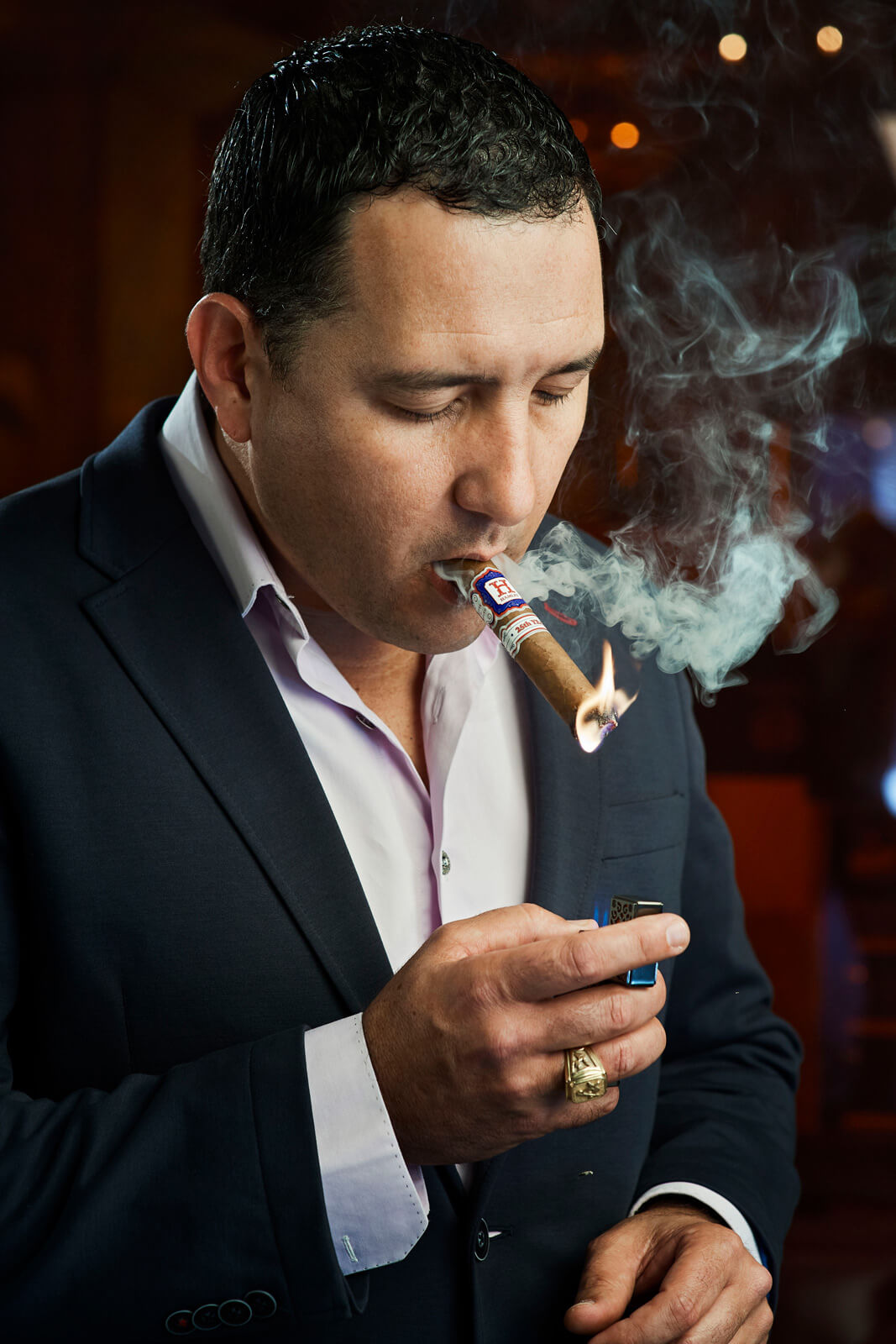
Hamlet Paredes
Hamlet and Cuba
For those who still believe that the box they picked up on the Malecón is genuine, I remember one occasion when I was with Hamlet in the VIP room at the back of the factory. I think VIP is Cuban for “the room where Hamlet can smoke cigars and drink rum with his friends.”
There was a knock on the door and a very well-dressed Canadian gentleman entered, asking what this was and what were we doing. Hamlet explained it was a small private gathering. Not to be deterred, our new friend asked what we were smoking and how much they were.
Hamlet suggested he speak to the front counter, but he was insistent, claiming that all the cigars here were far too expensive and he could do better on the street. Hamlet explained that if he bought on the streets, he’d be buying fakes. Our friend was having none of it, telling us that the cigars he bought from someone’s cousin’s brother-in-law who worked in the factory were most definitely the real thing. No matter how hard Hamlet tried to persuade him otherwise, he was not having it.
In the end, he left telling us how dumb we were to try and convince him he’d bought fakes (presumably, he could see through his glass-topped box – neither Cohiba nor any other producer in Cuba have ever put cigars in a glass-topped box) and laughing about how much he’d saved. I suspect he never knew the difference.
I first had the pleasure of meeting Hamlet in Brisbane of all places. Young, enthusiastic, wonderfully entertaining (I swear Hamlet could do stand-up comedy if he ever gives up cigars). How did he come to Brisbane? A long story, and like most of Hamlet’s stories (which are always long, though always entertaining), it varies considerably, usually as the hour gets later and the level in the rum bottle gets lower.
One version Hamlet told me was that as his family was composed of all doctors, it was off to medical school for him. But, he said, slowly shaking his head, I had to give it up. I just could not keep up. Because of all the study, I asked?
“No,” he replied. “Mi amigo, the girls. There were 195 students in my class. 190 of them girls. And two of the guys were gay. I could not keep up. I was having multiple dates the same night. It was too much for me.” Knowing Hamlet, he really must have been stretched. Hamlet tells a more sedate version in this wonderful interview clip.
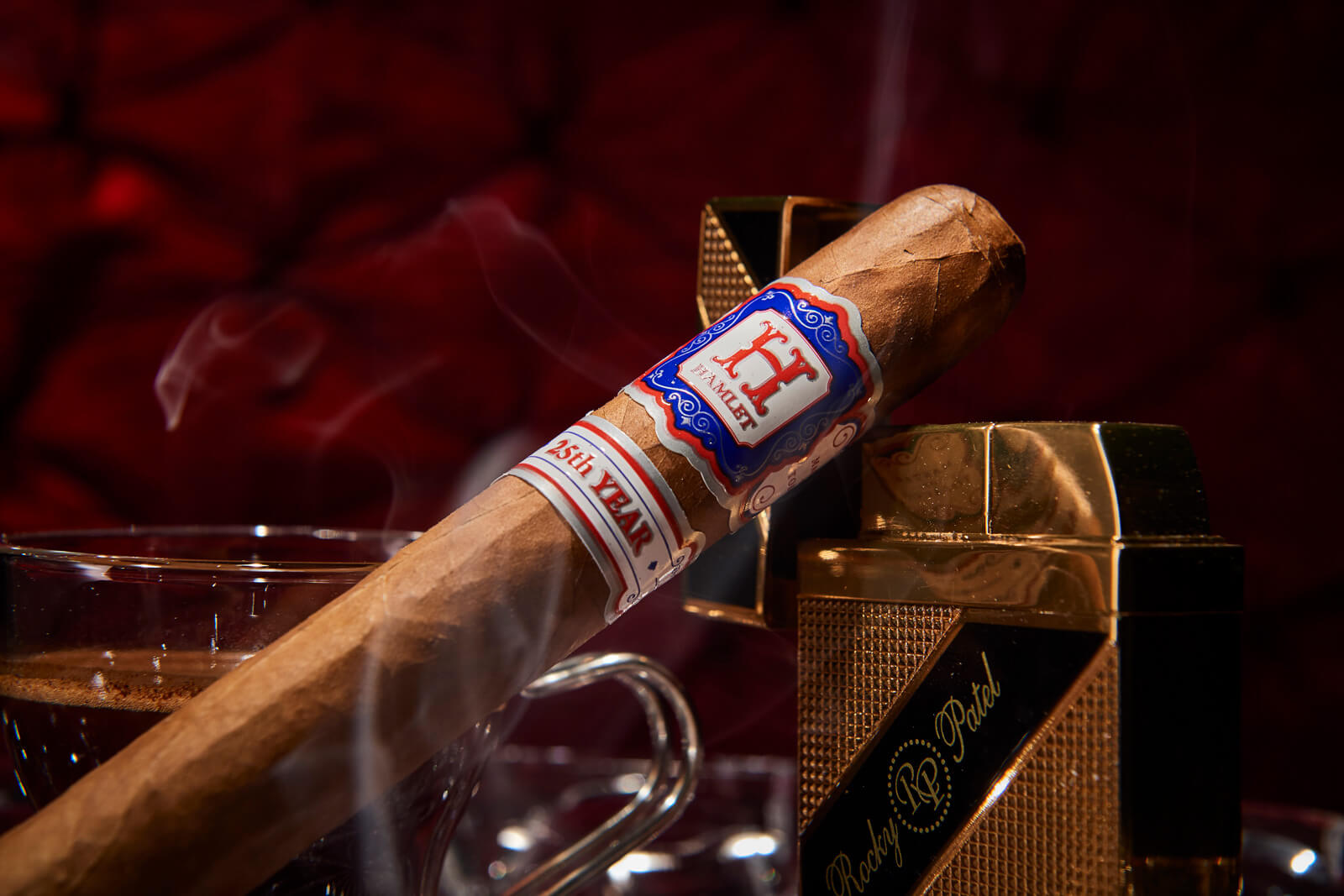
Rocky Patel Hamlet 25th Year cigar
How Hamlet got into cigars
An uncle in the cigar industry took him along to the Partagás factory to see if he was better suited as a roller. His first reaction was absolutely not. No way was he sitting at the same desk for eight hours a day, every day, rolling cigars. He tried a few associated jobs, mostly pushing boxes around, but soon found himself back with the rollers. So he went to cigar rolling school.
Normally, this is a nine-month course, which gets you to the basic level. To reach the upper echelons can take decades. Hamlet and a couple of others finished basics within six months. Seems he had an aptitude for it and was learning that it was an extremely skilled and difficult pursuit, but no one quite realized just how talented he was.
Within a year, he had scaled the lofty heights, something almost unheard of, and achieved the rare distinction of “Master Roller.” Before long, at the ridiculously young age of 19, he was an assistant manager at the Romeo & Julieta factory.
A few years later, when he was just 23, someone entered him in the annual cigar rolling competition, where ten rollers must make 50 Robustos and 50 Pyramides, all without the assistance of molds and presses (known as freehand rolling), which is far beyond the ability of all but a few. The youngest of the other nine contestants was 60.
During the event, Don Alejandro Robaina walked into the room. Don Alejandro was pretty much cigar royalty as evidenced by Havana naming an entire line of cigars after him. His farm is known for producing some of the greatest tobacco on earth. In wine terms, it was like he owned and made Domaine de la Romanée-Conti.
I had the pleasure of meeting the gentleman twice, the first time at his farm when some friends and I were able to visit (not easy) on our first trip to Cuba, from which I have a humidor signed by the man himself. Don Alejandro walking into the competition would have had the same impact as Beyoncé wandering into a primary school’s talent show.
Don Alejandro asked to try one of Hamlet’s cigars. He loved it and asked for another. Hamlet, never one to miss an opportunity, gave him 25 – he had enough tobacco and time to make another 25 for the competition.
Legend has it that later that evening when the bigwigs from Habanos gathered for dinner with Don Alejandro, he put the cigars on the table. The assembled elite loved them and praised Don Alejandro for his great abilities. He told them they were not his but rather that of a young roller. Hamlet went on to win the competition.
At the awards ceremony, Hamlet was approached by an Asian lady who wanted to know his story. She came to the factory next day and they spoke at length. It turned out she worked for PCC, the Pacific Cigar Company owned by David Tang that is responsible for Cuban cigars throughout Asia Pacific and beyond. She insisted that he do a tour for them.
As it happened, Brisbane was on the itinerary. This was around the turn of the century, and we had a brilliant evening. Hamlet showed us not just some of the cigars he rolled on the night but also his legendary stamina. I’ve caught up with Hamlet back in Havana on numerous occasions.
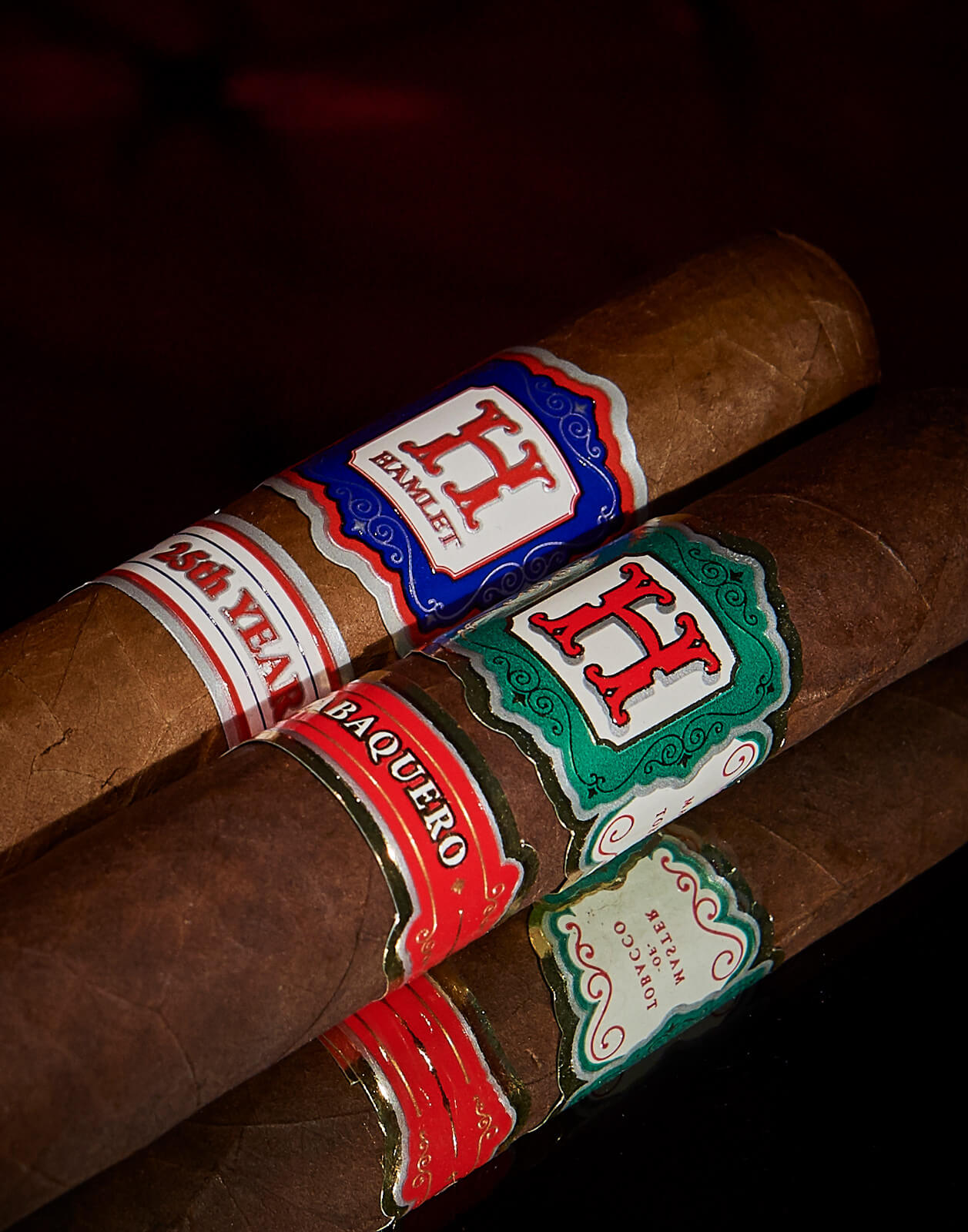
Cigars by Hamlet Paredes for Rocky Patel
To be or not to be
Finally, Hamlet had his “to be or not to be” moment: in 2015, he realized that he had gone as far as he could in Cuba and was keen to explore the world of cigars beyond the island. Habanos permits its rollers to tour regularly and so he was familiar with what he might offer, as were many in the industry familiar with him and his skills.
Hamlet is as proud a Cuban as one could meet so this was not easy for him. But in the end he made it to the United States and, with the help of two of his great friends, Rob Fox from JJ Fox in London and Rob Ayala from Cigar Czars/Friends of Habanos in Brisbane (readers will be familiar with the latter Rob as I have mentioned him on Quill & Pad several times as the friend with whom I do the cigar videos on www.friendsofhabanos.com), he was able to join with Rocky Patel, a highly respected cigar producer in Florida.
It was not long before Hamlet had his own line under the Rocky Patel auspices. We had a long chat over Zoom recently during which Hamlet was kind enough to explain to a small group of friends and fans the blending processes he goes through and the differences.
Put simply, a great roller has the skill exhibited by a great blender of non-vintage champagnes. It takes years to master, and they are forever learning and improving. As well as being a terrific bloke, Hamlet is the finest roller I’ve ever come across. The few remaining Cuban cigars of his that I have are prized possessions (on one fishing trip to Cuba, we had bought 150 mixed cigars he’d rolled but, sadly, one of the team left them in his hotel room when we all checked out – it still makes me weep to think of that).
Hamlet found that starting again with Rocky Patel was like “being born again.” He found himself working with leaves he’d never experienced before. As I mentioned, Hamlet is proudly Cuban and will never admit that non-Cubans can match their best, but he was surprised to find such quality in many of the leaves. He didn’t enjoy it to begin with and found it much harder than expected. He also found himself rolling many sizes and shapes he’d never made in Cuba. But there was “madness in the method.” His palate, as he says, went from “night to day.” I’m not aware if Hamlet is aware of Polonius’s quote, “to thine own self be true, and it must follow as the night the day,” but it seems rather appropriate.
He has had to walk an interesting tightrope. He found he needed to make cigars that Rocky’s clientele would appreciate, but he also wanted to stamp his own style and skills on them. He said that to begin with he found non-Cuban tobacco “like working with rocks to make mangos.”
One suspects that to begin with he had to prove himself and so the cigars were more for the clientele than to show his skills. One big difference was that he found non-Cubans to have a much looser draw than Cubans. He has very slowly tried to bring in a tighter draw, but it is a work in progress. But now he is able, as he says, “to go back to me being me.”
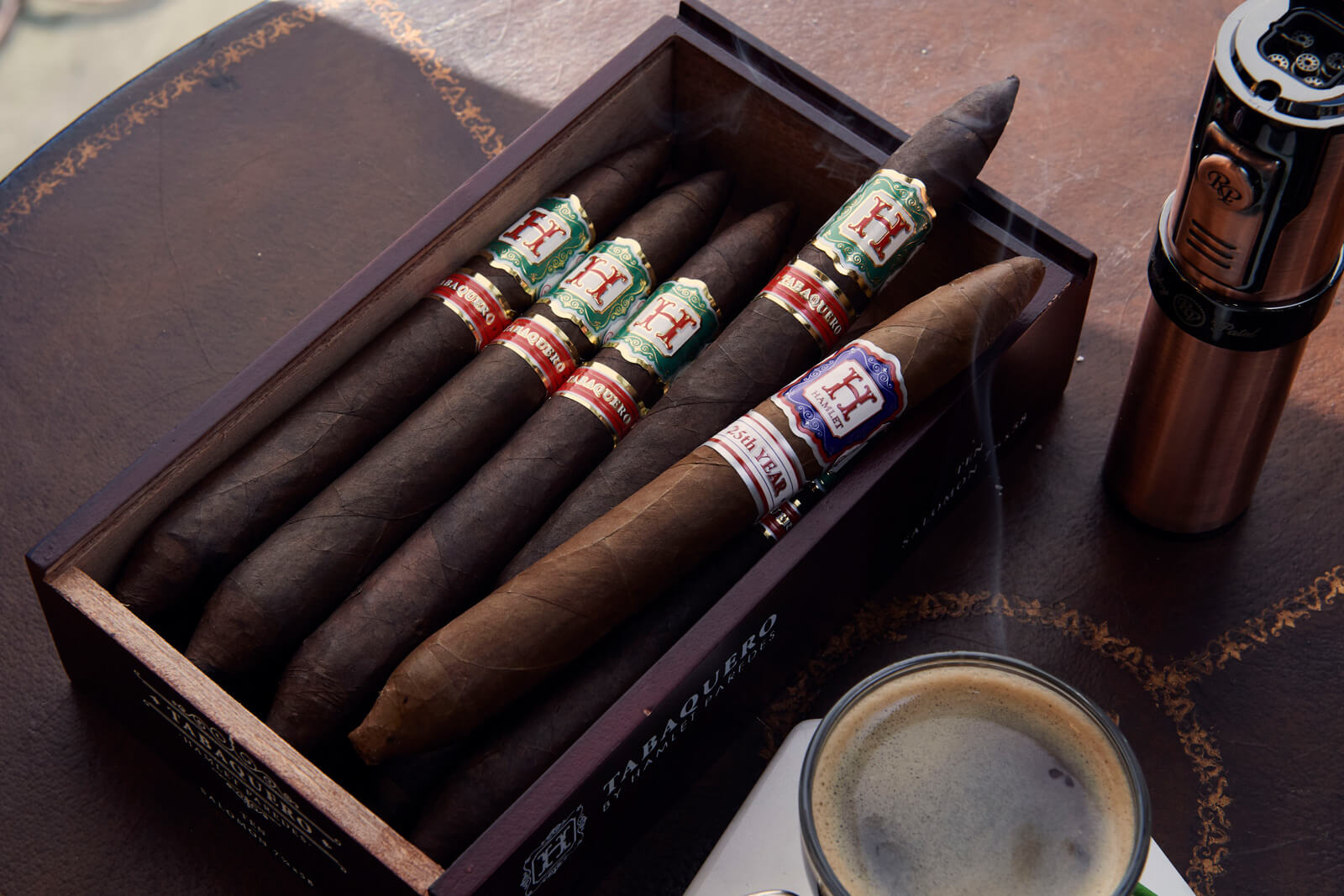
Rocky Patel cigars by Hamlet Paredes
And at the same time, he has a much greater appreciation for the quality of non-Cuban tobacco and finds he can blend it in ways he’d never have imagined. He has also been delighted working with Rocky to find that the tobacco he is using is usually aged far more than he ever had in Cuba – usually at least 3.5 to 4.5 years, but up to eight years and more. And he has so much more to work with – perhaps a Mexican leaf as wrapper with Dominican or Nicaraguan or Honduras filler. One cigar might have tobacco from five different countries. “There are more things in heaven and earth, Horatio.”
He echoes the complaint that is so often thrown at Cuban cigars: consistency, or the lack of it. Open a box of 25 Cubans and there is every chance there will be a couple of duds, some brilliant cigars, and everything in between. With non-Cubans, all 25 will be as close to identical as one could wish. Quality control is far superior outside Cuba.
One thing that Hamlet stresses is that “telephone blending” never works. You cannot give a roller a recipe and expect it replicated time after time. Rollers need experience. They must work for decades to perfect their skills. They need to feel the leaves and understand them, to make allowances and amendments. Each crop of tobacco is different. Hamlet believes that a top roller can make a great cigar from average leaves, “but life is a hell of a lot easier if they give me quality tobacco in the first place.”
A good roller needs to be two steps ahead of where he is when rolling. What will the finished cigar be like? How about aging qualities? With age, cigars “go down” (he means, they lessen in intensity) and this has to be considered.
In the end, he says, it comes down to creating balance. There is only so much you can do.
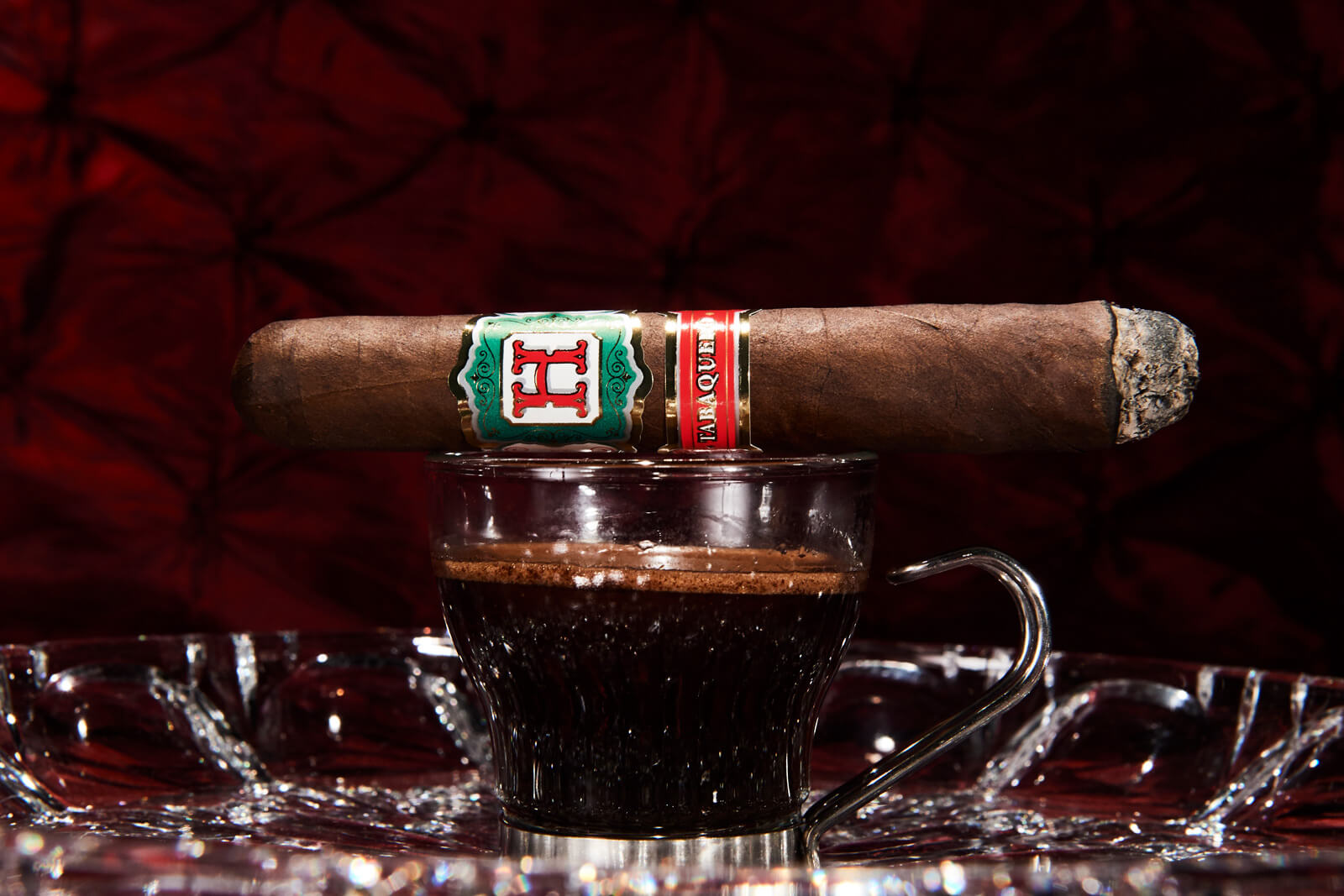
Rocky Patel Salomones from the Tabaquero by Hamlet Paredes
In doing this piece, I thought it only right to pull out one of the first cigars Hamlet made with Rocky Patel: a Salomones from the Tabaquero by Hamlet Paredes series. Other ranges include the Hamlet 25th Year and Liberation by Hamlet.
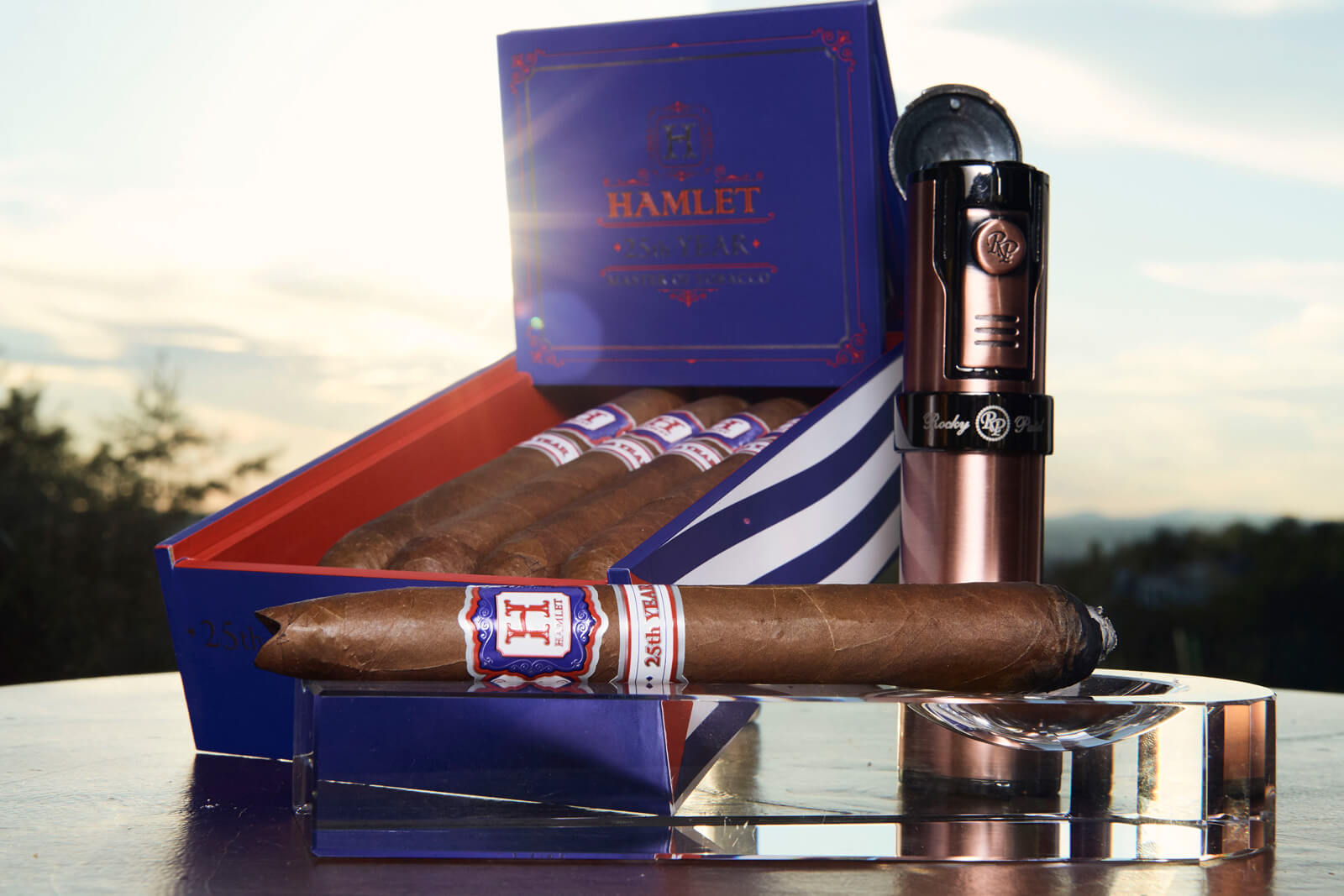
Rocky Patel 25th Year by Hamlet
I chose the Salomones for one reason. This, perhaps more than any other cigar, exposes a roller’s skills or lack thereof. It is a weirdly shaped cigar, 7 5/8 inches in length and with a ring gauge of 58. It narrows at both ends though it is more bulbous at the smoking end.
I understand that it has a San Andreas wrapper with filler tobacco from Nicaragua along with binders from Mexico and Brazil.
I have to confess that I am not very familiar with non-Cuban cigars, many having a rather robust earthiness for me. I tend to prefer more elegant and subtle cigars. This was undoubtedly powerful and with a surprisingly firm draw to begin with.
I lopped a tiny bit more off with the cutter, and this opened things up nicely. Certainly earthy and dark fruited, coffee grounds, cocoa, and some black pepper. To be completely honest, I preferred the astonishingly good cigars Hamlet made while still in Cuba, but this was no slouch. A 92 for me.
While the flavors might not have enthralled me, what was obvious was the skill with which it was rolled. Even though I smoked it outside on quite a breezy day, it was immaculate. Slide rule perfect in the burn and never needing the slightest touch-up. Truly the work of a master.
On one hand, I very much miss the incredible cigars Hamlet would roll for us in Cuba, but on the other I could not be more delighted that such a good friend has gone on to achieve so much and to show the world what he can do. That said, there is one thing about which I have no doubt: we are yet to see the very best of Hamlet and his cigars.
His cigars do indeed, “speak loudly for him.”
For more information, please visit www.rockypatel.com/rp-family/hamlet-paredes.
You may also enjoy:
Cohiba Robusto: The Cuban Benchmark For All Cigars
Bond Roberts Cigar Auctions: Avoid The Plethora Of Fake Cigars With This Trustworthy Source
Isla Del Tesoro: The World’s Rarest, Greatest Rum
Cohiba Lancero Cuban Cigars: Talked About Far More Than Smoked
Leave a Reply
Want to join the discussion?Feel free to contribute!



That top picture, have you ever seen anything look less glamorous, that was trying to look glamorous ? LOL
A fantastic read, Ken. I was lucky enough to sit in on that Zoom chat with Hamlet. Incredible listening to him explain the way he blends cigars, and what he is trying to achieve. I’m going to have to pull out one of his Tabaquero cigars this weekend and revisit them.
Thanks, Fuzz. Certainly was a worthwhile event.
We were lucky to have Hamlet on our cigar podcast earlier this year, love this guy. He is slowly making a name for his brand. He is putting in the time to meet with the shops and the public. I’m sure he learned that from Rocky.
Hi, Paige. Thanks for your note. He is fantastic and deserves all the recognition he gets, I know that before he joined Rocky and was still with Habanos, he did a great deal of travelling and meeting people (not in the States, of course). Amazing how often you run into cigar lovers from all corners of the globe who have met Hamlet during his travels. I think it is just part of his nature and I’m sure he is very grateful to Rocky for the chance to continue to do that.
Hey Ken, great article and insight. I’d love to see Hamlet get into the higher-end cigar market, as it’s flush with cigars in his current price point. Being known as the worlds best cigar roller would lend itself nicely to the ultra premium sector. I look forward to your next article.
Thanks, Paige.
I dont think he was a master roller as you describe at the age of 19. Becoming a master roller requires two things and a third one is politics. Please explain further if you can. John